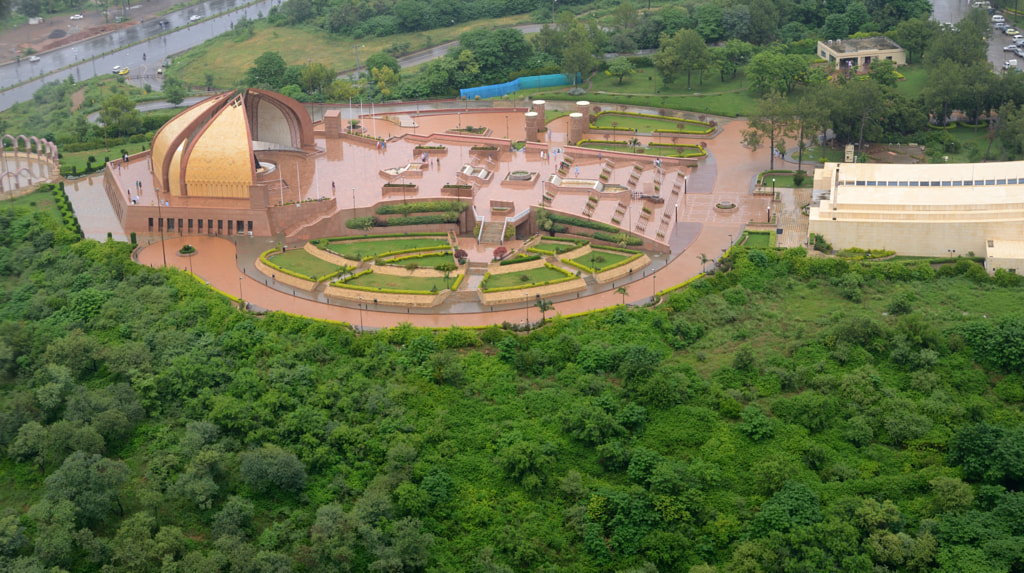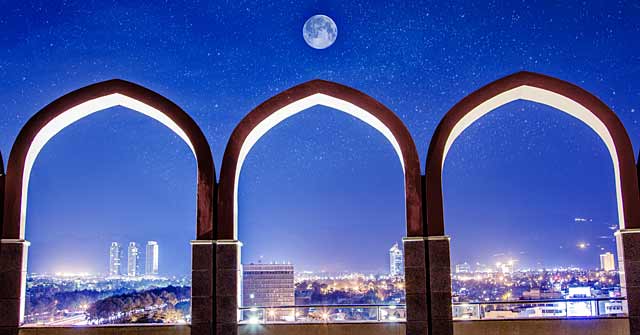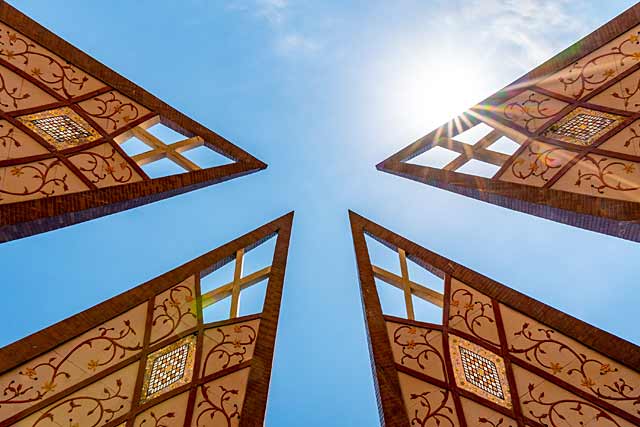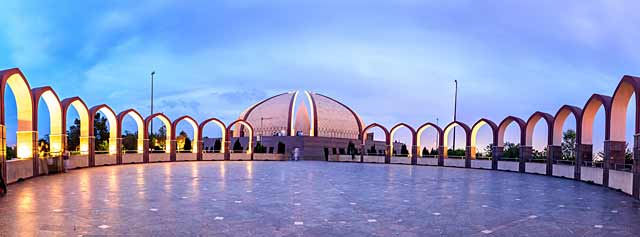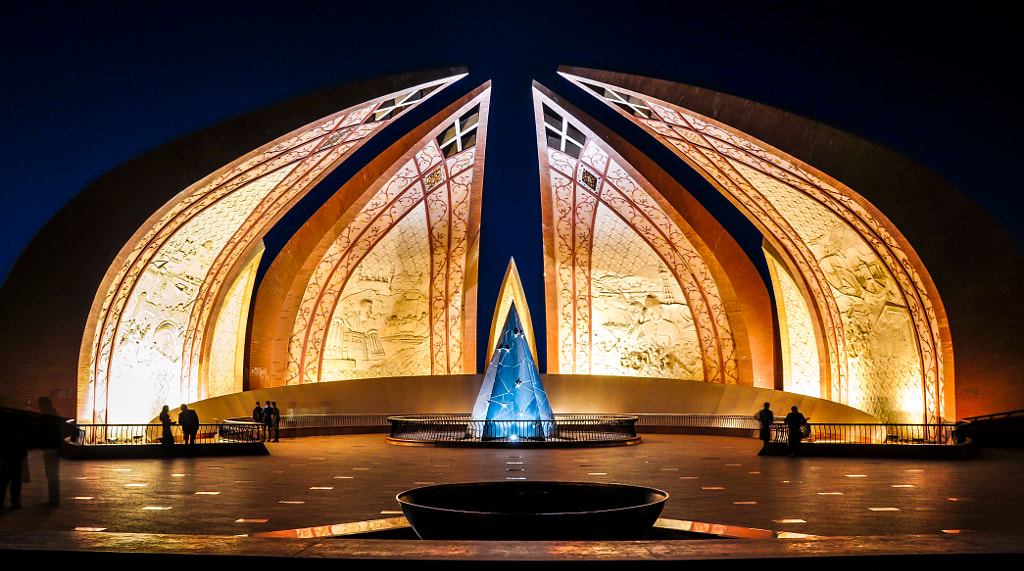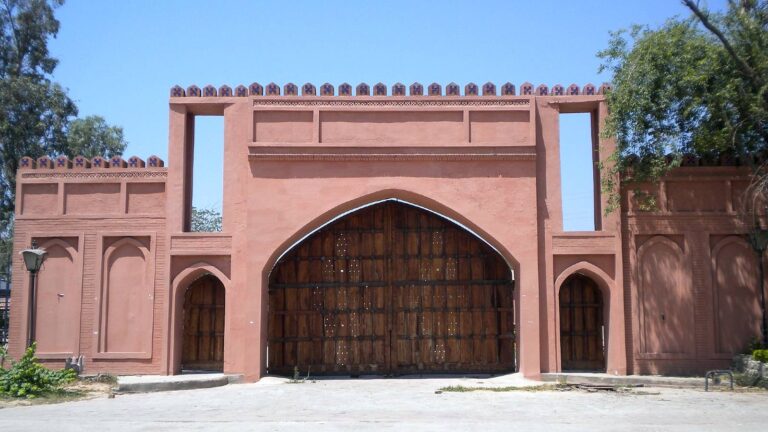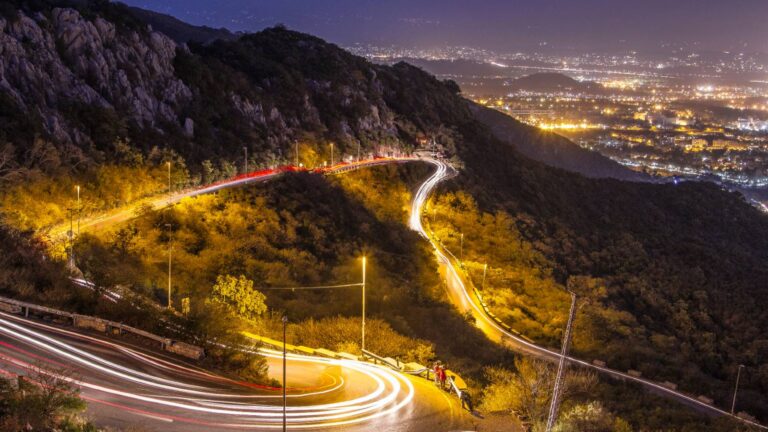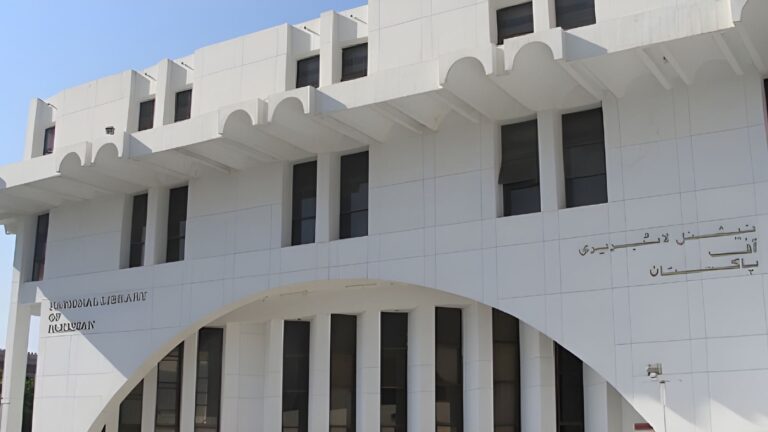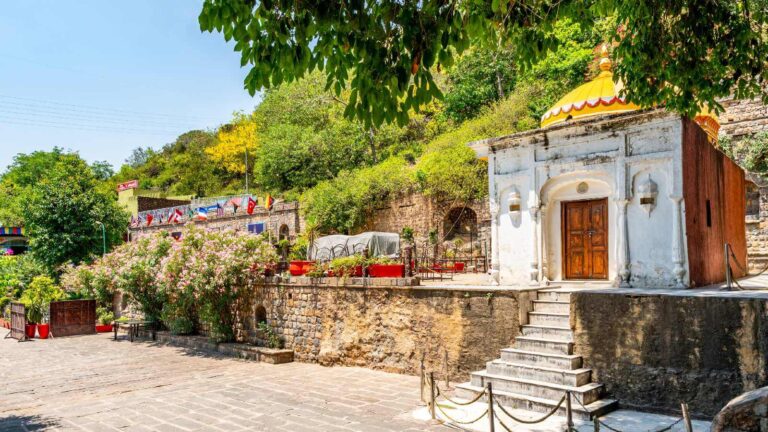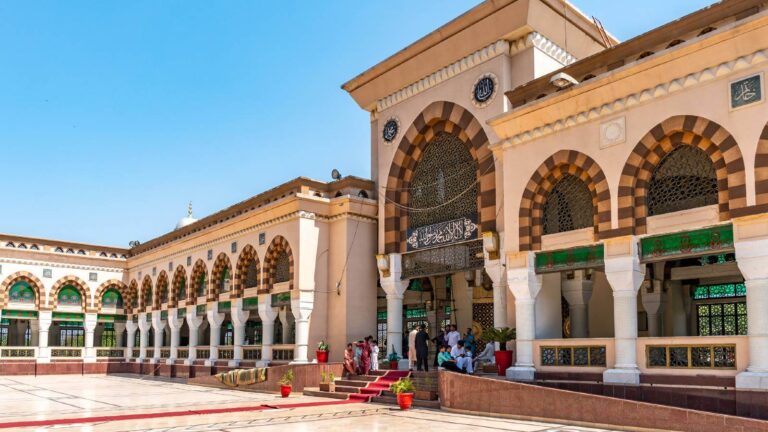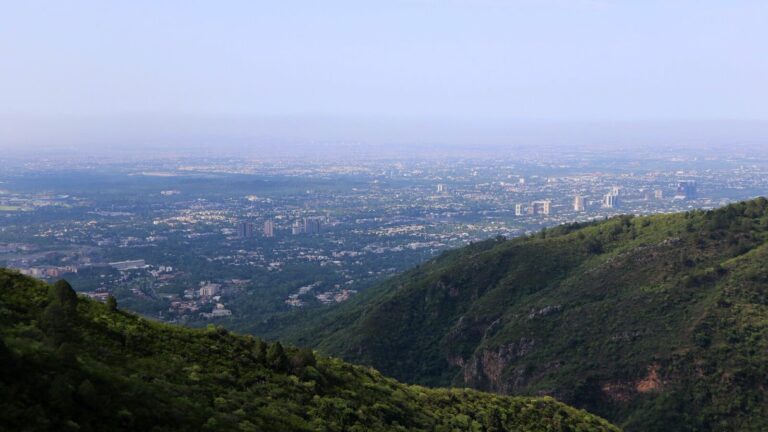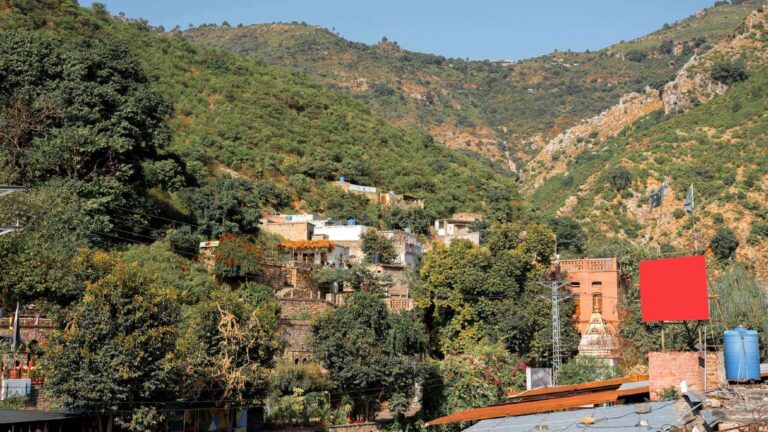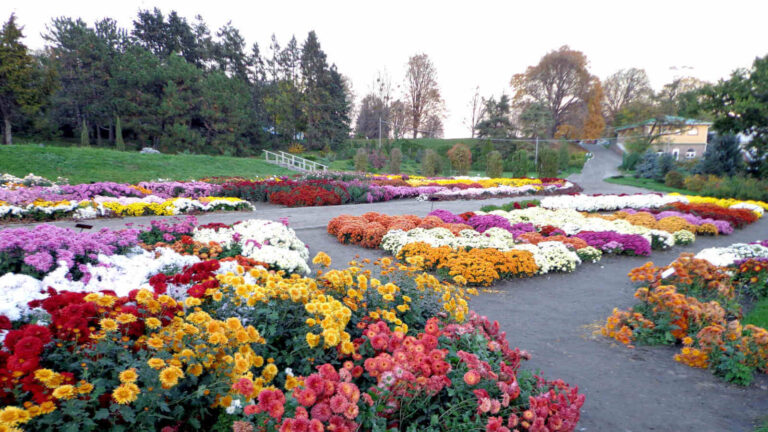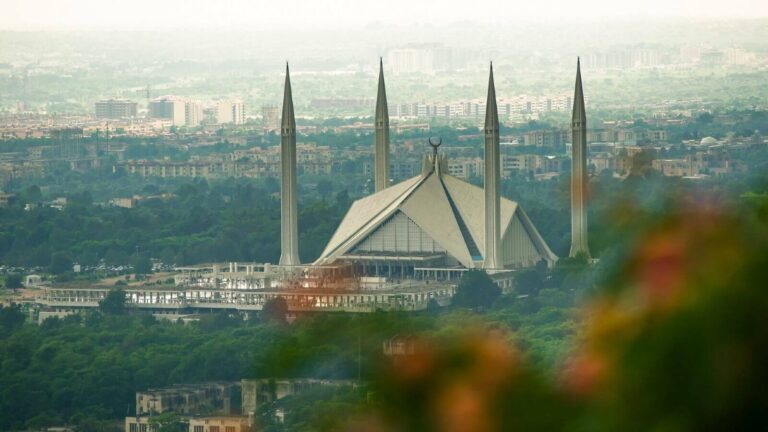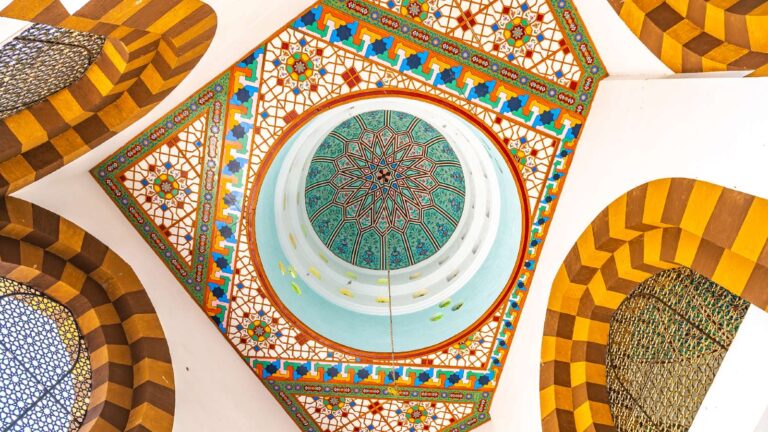Getting There
By Driving Car or having Taxi/Van/Bus.
What to Expect
The place is ideal for afternoon and evening outing with family and friends.
Its elevation makes the monument visible from across the Islamabad-Rawalpindi metropolitan area and is a popular tourist destination. Covering a total area of 2.8 hectares, the monument is shaped as a blooming flower petal-shaped structure built of granite, with the inner walls of the petals inscribed with the outlines of Lahore Fort, Badshahi (Emperor’s) Mosque, Khyber Pass and Minar-e-Pakistan. The Monument opens onto a marble terrace providing a bird’s-eye view of Islamabad City.
The four main petals of the monument represent the four provinces of Balochistan, Khyber-Pakhtunkhwa, Punjab, and Sindh, while the three smaller petals represent the three territories of Gilgit-Baltistan, Azad Jammu & Kashmir and the Tribal Areas.
The central platform is made in the shape of a five-pointed star which is surrounded by a water body. A metallic crescent surrounding the star is inscribed with sayings of the Founding Father of Pakistan, Muhammad Ali Jinnah and poetry of National Poet, Allama Muhammad Iqbal.
Adjoining the Monument is the Pakistan Monument Museum, which includes a wax museum depicting important events leading to the Pakistan Movement. The complex receives on average received 1500 tourists per day. From air the monument looks like a star (center) and a crescent moon (formed by walls forming the petals), these represent the star and crescent on Pakistan’s flag.
History
The monument was constructed to symbolize the unity of the Pakistani People. The foundation stone was laid on 25 May 2004, completed in 2006 and inaugurated on 23 March 2007.

